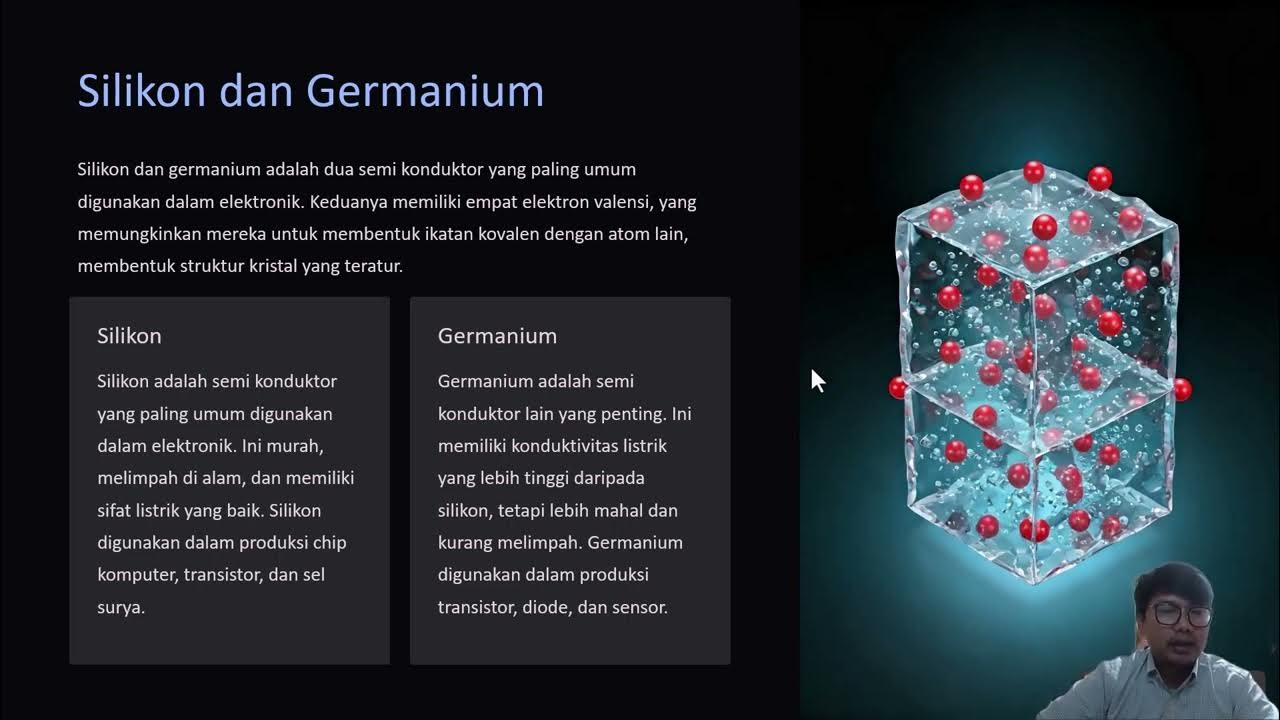SJEC Lectures: Engineering Physics - Electrical Conductivity in Metal 1
Summary
TLDRIn this video, the lecturer introduces the topic of electrical conductivity in metals, beginning with an explanation of materials classified as conductors, insulators, and semiconductors. The focus then shifts to the classical free electron theory (Drude-Lorentz theory), which explains how free electrons in materials like copper enable conductivity. The lecturer describes how these free electrons drift when an electric field is applied, generating current. The session also touches on factors influencing drift velocity and current, such as electron density and relaxation time. Lastly, the limitations of the classical theory are mentioned, setting the stage for further exploration in upcoming classes.
Takeaways
- 😀 The class will now be conducted through small videos, and students are encouraged to learn independently by watching them.
- 😀 Electrical conductivity in metals is the topic for the fifth module, focusing on understanding how conductivity occurs in conductors.
- 😀 Materials are classified into three categories: conductors, insulators, and semiconductors. Conductors allow the passage of electric charges.
- 😀 Metals like copper, silver, gold, and aluminum are examples of conductors that allow electric charges to pass through them.
- 😀 Insulators like wood, plastic, and paper do not allow the flow of electric charges, while semiconductors have temperature-dependent conductivity.
- 😀 The classical approach to explaining electrical conductivity in metals is the 'Classical Free Electron Theory' developed by Drude and Lorentz.
- 😀 The theory explains how free electrons move between atoms in a metal, contributing to its conductivity. These electrons are also known as valence electrons.
- 😀 Copper, for example, has one free electron in its outermost orbit, which is key to its ability to conduct electricity.
- 😀 The Drude-Lorentz theory explains that when atoms are brought closer, the energy levels overlap, allowing electrons to drift from one atom to another.
- 😀 In the absence of an external electric field, the drift velocity of electrons is zero, and no current flows. However, applying an electric field causes electrons to drift, creating a current.
- 😀 The current in a conductor depends on factors like the number of free electrons, the area of cross-section of the conductor, the charge of the electron, and the drift velocity, which is proportional to the applied electric field.
Please replace the link and try again.
Outlines

This section is available to paid users only. Please upgrade to access this part.
Upgrade NowMindmap

This section is available to paid users only. Please upgrade to access this part.
Upgrade NowKeywords

This section is available to paid users only. Please upgrade to access this part.
Upgrade NowHighlights

This section is available to paid users only. Please upgrade to access this part.
Upgrade NowTranscripts

This section is available to paid users only. Please upgrade to access this part.
Upgrade Now5.0 / 5 (0 votes)





